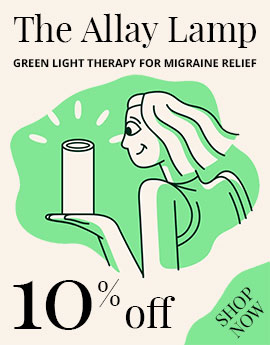by Ambre Emory-Maier
Alice in Wonderland (AIWS) syndrome, Todd’s syndrome or dysmetropsia – is what the neuro-otologist said to me about the experiences I finally shared with him. It sounded scary, weird and made me question reality because of its terrifying symptoms during vestibular migraine attacks which were already unpleasant and debilitating.
My Alice in Wonderland syndrome symptoms
Since I had very little to no pain prior to the correct diagnosis it was challenging for a non-specialist to define these episodes. I asked the doctor to explain the diagnosis. He said it is the brain’s perceptual system malfunctioning and compromised because of migraine.
Alice in Wonderland syndrome is a little understood condition. Many people who suffer from migraine have Alice in Wonderland syndrome. Unfortunately, these patients either do not share the symptoms with their doctor or if they do, they are dismissed by the physician especially those not trained in migraine medicine. My neurologist shared that in earlier centuries women with these transient symptoms were often thought to be hysterical or mentally ill.
What is Alice in Wonderland Syndrome?
Alice in Wonderland syndrome is a neurological disorder not a mental health disorder. However, when you research it you will find it classified as a neuropsychological disorder. Currently it sits in the diagnostic realm between the two yet, as my neuro-otologist told me, it is neurological not psychiatriac and most often seen in migraine patients and those with epilepsy.
Some facts about Alice in Wonderland disorder and the symptoms
Alice in Wonderland syndrome often goes hand in hand with migraine with aura. Just like aura it can happen before or during an attack. Most often you read about the visual misperceptions such as seeing things as if they are small, large or lop-sided in size. However, AIWS is much more than visual perceptual changes. Symptoms can alter one’s sense of time and space. There can be auditory hallucinations.
The 6th sense
Remember, we have five senses with an additional sixth sense of proprioception. Any of these can be affected and suddenly down the rabbit hole you go! If you think about Lewis Carrol’s (Charles Lutwidge Dodgson) story of Alice in Wonderland, the main character Alice grows very small, tall and then resumes her normal size. She also has other adventures such as objects around her moving fast, words that sound garbled and other somatosensory symptoms. The author of Alice in Wonderland himself was believed to suffer from migraine but we have no proof of this diagnosis.
The sensory systems
When the sensory perceptual systems in the brain are studied, the sensory systems of the brain sit on the top of the brain, located in the somatosensory cortex. I like to think of it as a headband someone might wear in their hair just in front of their ears. At the back of the head is the visual area. The auditory areas of the brain are near and above the ears. Limb control is slightly behind the mid-brain area with personality and judgement behind the forehead.
Migraine is thought to be a sensory perceptual disorder where the brain is ultra-sensitive to any sort of stimuli external or internal (for example, hormone fluctuations for women). For those who have Alice in Wonderland syndrome, our brains have trouble processing and making meaning of the information coming in and filtered by the thalamus or the ultimate receptionist.
This can create some wild manifestations or as one of my migraine friends says, “a glitch in the system.” This is an over-simplification of an explanation about AIWS but it’s helpful.
Dr. Oliver Sacks book, Migraine, has some awesome examples of aura and AIWS. Written in the early 1990s, Sachs does not mention the Alice in Wonderland syndrome but if you sift through the book’s Index you will note that he mentions patient case studies that are clearly AIWS in nature. Alice in Wonderland syndrome symptoms are clearly described.
Alice in Wonderland syndrome anxiety
The strange experiences made me feel embarrassed, hopeless and afraid to tell my family. It is known that vestibular migraine and anxiety are associated. Similarly, there is an Alice in Wonderland syndrome-anxiety link that is perfectly logical. When your senses are distorted and unreliable, who wouldn’t feel fear.
Sure, anxiety can feed migraine, but the Alice in Wonderland syndrome symptoms are anxiety-provoking due to the peculiar nature of the sensations and distortions. Further, it’s often hard to share about what is actually going on as so few people can relate.
Because of the areas of the brain specifically impacted are quite near each other, the amygdala can get activated into “flight, fight or freeze.” You are not weak if this happens!
My Alice in Wonderland syndrome diagnosis
Let’s go back to the early stages of my diagnosis. My Alice in Wonderland symptoms arose concurrently with vestibular migraine symptoms. The vertigo led me to a neurologist. In 2015, I started to have symptoms of feeling dizzy, light-headed, brain fog, odd head sensations and other bizarre things such as feeling very tall and my limbs moving almost by themselves.
I had auditory disturbances such as hearing music, sounds sounding like words or actual sounds that were distorted. In talking with a friend who is a physician she suggested going to my primary physician for assistance reassuring me that I would find help. Initially that doctor thought I was experiencing menopause symptoms and prescribed an HRT medication reassuring me that I was not crazy and I would soon feel better. Sadly, that was not the case, I ended up feeling worse because of the hormonal changes caused by the oral drug and bio-identical creams.
Specialists and more tests
My next stop in seeking help was our family’s Ear, Nose and Throat (ENT) doctor. This doctor was sympathetic. He checked me for BPPV. I had a CT scan and hearing tests. After all the tests were normal, he advised me to see a neurologist. In the meantime, I continued to have these disturbances and went to my eye doctor after a particular visual distortion. The eye doctor advised me to see someone who specialized in the brain. I was sure I had some very serious debilitating disease like ALS, MS, dementia or just losing my mind. Luckily, when I set up the neurology appointment, I was connected to a neuro-otologist at The Ohio State University Medical Center. It took three months to see him.
Now we are back to the beginning of this part of my migraine story. To confirm the diagnosis of migraine and nothing sinister I underwent the following tests; blood work, VNG, EEG and MRI with contrast dye. A brain tumor and epilepsy were ruled out. It was exhausting and nerve-wracking yet crucial for correct and effective treatment.
Alice in Wonderland syndrome treatment
I asked about a cure for AIWS and my neuro-otologist said there was no cure but with treatment of the migraine disease it was likely to go away or happen rarely. Many patients can grow out of this syndrome, he stated. To start the treatment of migraine, I was given an anti-seizure medication in the hope to calm the brain down. Four years later, I work with a Headache Specialist and I think we have the correct combination at this time to settle my brain as I get farther away from menopause.
The medical world is still in its early stages of research to discover the complex causes of migraine and Alice in Wonderland syndrome. This is hopeful and discouraging at the same time. I encourage you to learn more about Alice in Wonderland syndrome through research and talking to your doctor. Make sure what you are reading is from good medical sources. Stay away from Facebook groups and questionable research on the internet that can make things scarier as you learn to navigate AIWS. Alice in Wonderland anxiety is real and there is no need to magnify it.
By sharing my Alice in Wonderland syndrome story it is my intent to offer other people with migraine reassurance and hope in gaining control of their symptoms and restoring a better quality of life.
Image by Willgard Krause from Pixabay
Research Sources:
Sachs. Oliver. Migraine. Penguin Random House: New York. 1992.
Prevalence and characteristics of Alice in Wonderland Syndrome in adult migraineurs: Perspectives from a tertiary referral headache unit.
Alice in Wonderland Syndrome: A real life version of Lewis Carroll’s novel.
*This article has been medically reviewed by Kevin Weber, M.D./M.H.A. Dr. Weber is board-certified in Neurology and Headache Medicine. He is an Assistant Professor of Neurology and is the Associate Residency Program Director in Neurology at The Ohio State University. Dr. Weber has migraine disease and is Ms. Emory-Maier’s Headache Specialist.

Ambre Emory-Maier has been a migraine sufferer since childhood. She developed vestibular migraine with aura and Alice in Wonderland syndrome around menopause. Professionally, Ambre has worked for over thirty years in the dance field as an administrator, teacher, stager, rehearsal director, dancer and writer. She also teaches yoga and well-being practices and partners with a medical doctor on how these practices can help restore those who have experienced trauma. When not immersed in her work, Ambre loves to spend time travelling, gardening, being with family and many pets in a busy household. She enjoys learning new things and is currently studying Spanish. Because of migraine and its impact on her life, Ambre is dedicated to helping others navigate and integrate this illness into their lives.


This is super interesting and informative! My mom has migraines so I’ll be sharing this with her.
This explains AIWS very well. I suffered from it as a child for years, it was very scary and came along with my migraines which I have suffered with for 45 years. I hope to see more research on it.